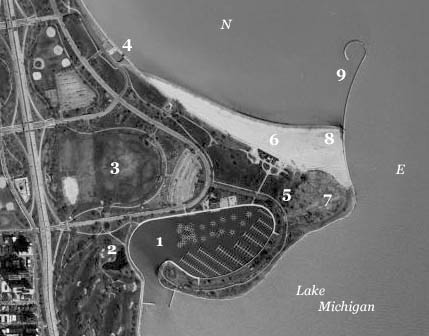Klehm Arboretum is in south Rockford, about 2 miles north of US 20 (bypass). Exit US 20 (bypass) at IL 2 (Main Street) and go north on IL 2. The entry for Klehm Arboretum is at Clifton Avenue at the bottom of a long hill. Turn left on to Clifton and then another left into the Arboretum. Admission is $4 for adults. The arboretum is open from 9:00 a.m. to 4:00 p.m., but is usually closed during the week between Christmas and New Year’s Day. Check the Arboretum website for closure information and winter hours. The visitor center has feeders. Check them when you pay your admission. The Arboretum honors memberships from other botanical gardens if they are a member of the participating agency group.
The abundance of berries and winter food, plus the mixture of deciduous and coniferous vegetation, plus a lot of thickets, make Klehm a winter hotspot for birding. The main attraction is the flocks of Cedar Waxwings and American Robins, which sometimes include a Bohemian Waxwing. Winter finches also frequent Klehm, and, during invasion years, both species of crossbills can be found there. In the winter of 2012-2013, a Hoary Redpoll was in a flock of 110 Common Redpolls, and, at the same time, a Gray Catbird was in a thicket below the redpolls. Birders have also found Eastern Bluebirds (frequent in winter), Brown Thrasher, and, for two years in a row, a Townsend’s Solitaire (presumably the same bird) was feeding on juniper berries.
Raptors like to haunt Klehm and hunt the waxwings and robins. Cooper’s and Sharp-shinned Hawks are most common. Red-tailed Hawks and Bald Eagles (the Rock River is less than ¼ mile away) often fly over.
by Dan Williams
